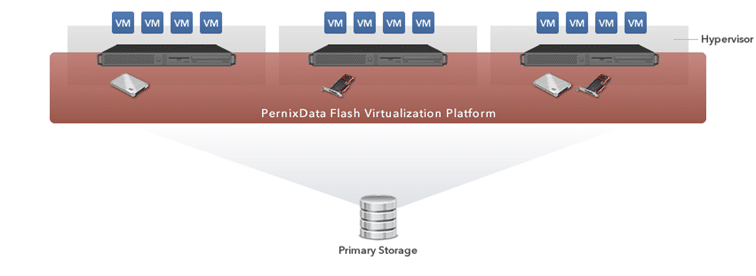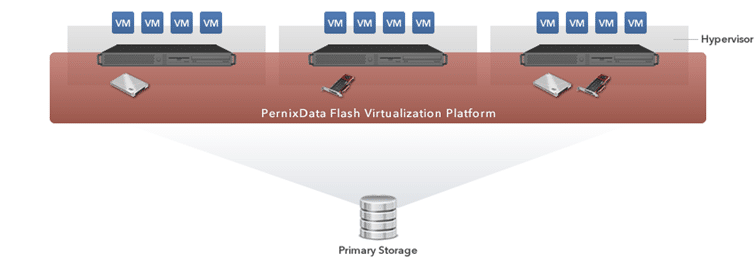Yesterday newcomer “PernixData” announced their FVP product, if it does what they promise, it will be a game changer. Looking at the experience the founders have in the virtualization scene there is no doubt they will deliver.
The founders are; “CEO” Poojan Kumar, a former head of data products at VMware, and CTO Satyam Vaghani, who is the former technology lead for VMware’s storage solutions like VMFS, VAAI and vVols.
Come to think of it, starting their own business was probably the only way these guys could exploit their full potential. With one of the leading Enterprise Storage Array vendors being the parent company of their employer there were probably not many other options but to leave VMware.
What does FVP do?
In short: It is software that virtualizes server-side flash memory.
What is new about that? you might ask.
1. It is Enterprise Class, it has no single point of failure and it can survive loss of flash devices, Network, Servers or even the Backend Storage. Data loss is prevented via synchronous replication to flash devices on peer servers in the cluster.
2. FVP does not aim to replace the storage array; it continues to leverage existing investments in storage.
3. It is a Hypervisor-only module, FVP is not an Appliance.
Where VMware delivers the vCPU and the vRAM, PernixData aims to deliver the vStorage.
Key Benefits:
Open Architecture
FVP’s open architecture means it can work equally well with any storage, any hypervisor and any flash device.
Server-Side Scale Out
FVP seamlessly scales out as you add more servers and server-side flash devices to your virtualized environment. In addition, remote flash devices are leveraged transparently for clustered hypervisor features such as live migrations.
Hypervisor Based
FVP is deployed transparently as a hypervisor-only module and therefore does not have the limitations of guest OS agents or virtual appliances
Read and Write Acceleration
FVP accelerates both read and write operations. For write operations, FVP can be configured so that changes to the data are initially committed to the flash and later persisted on the backend storage. In such scenarios data loss is prevented via synchronous replication to flash devices on peer servers in the cluster.
Source : http://pernixdata.com/




